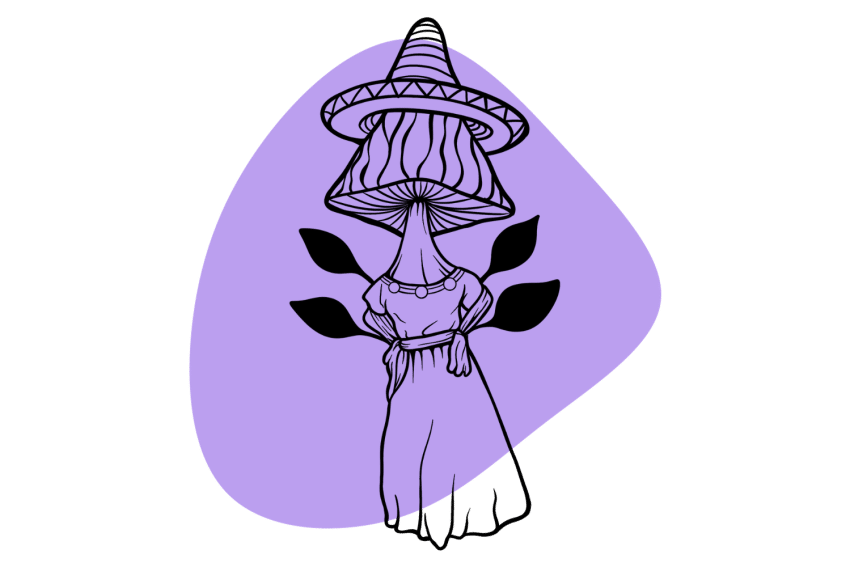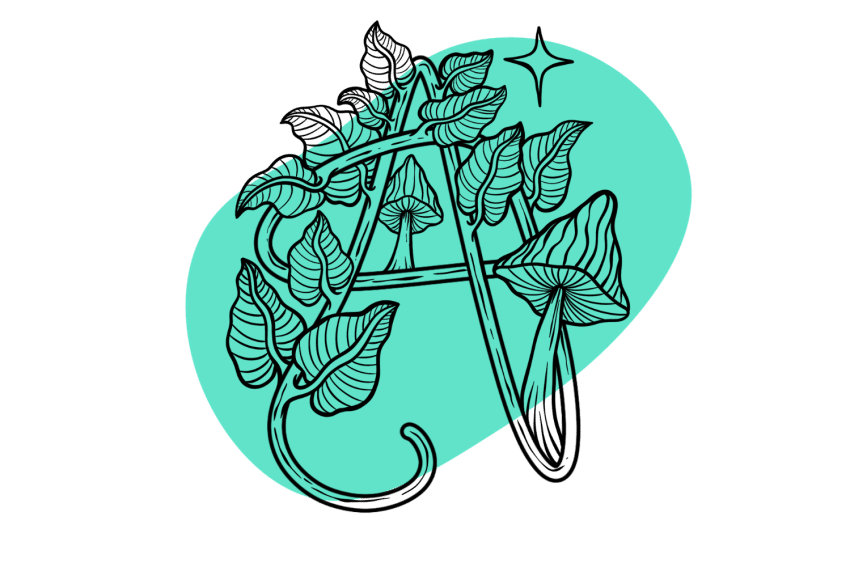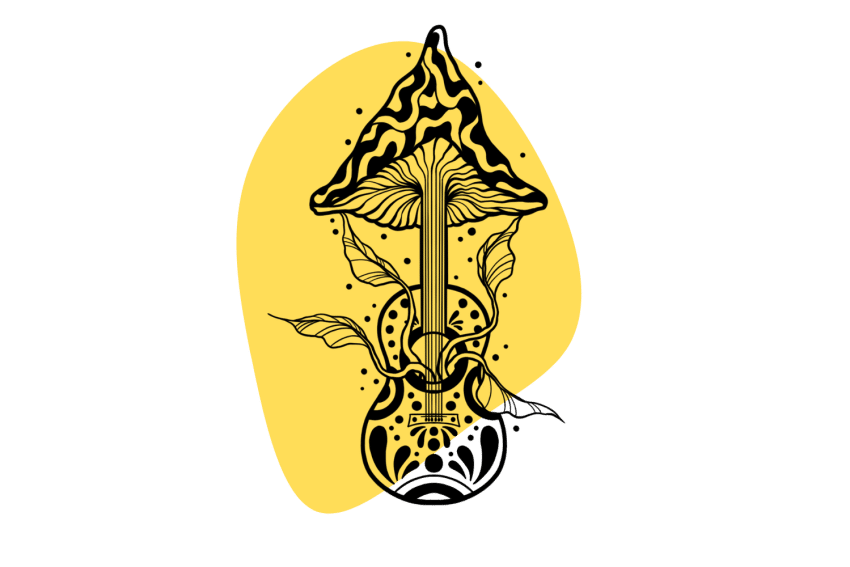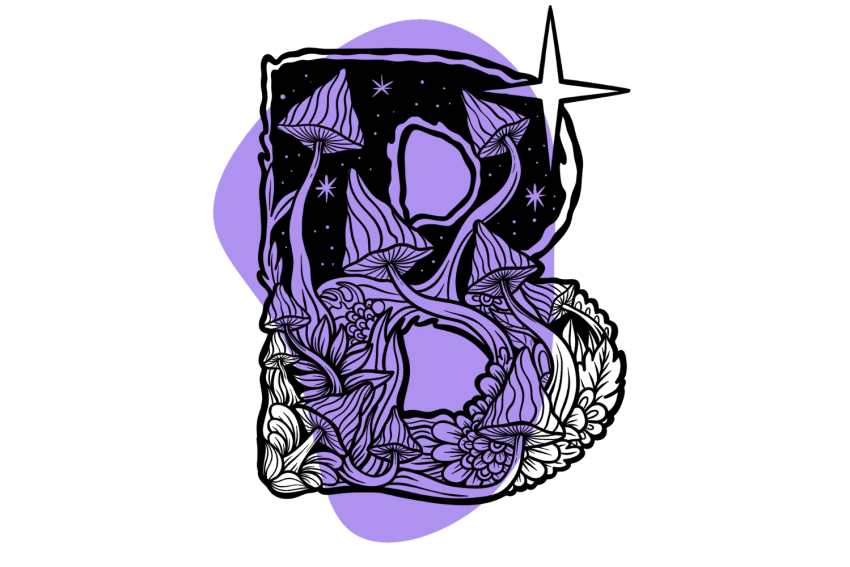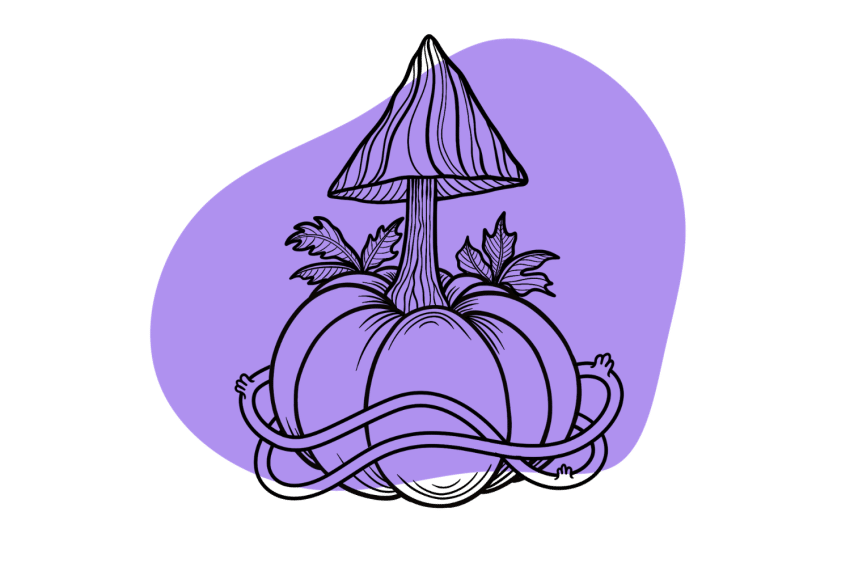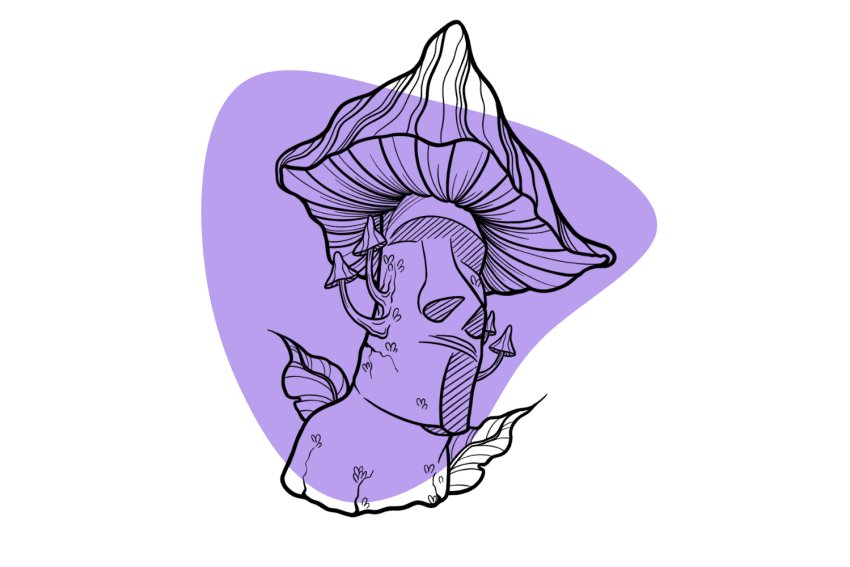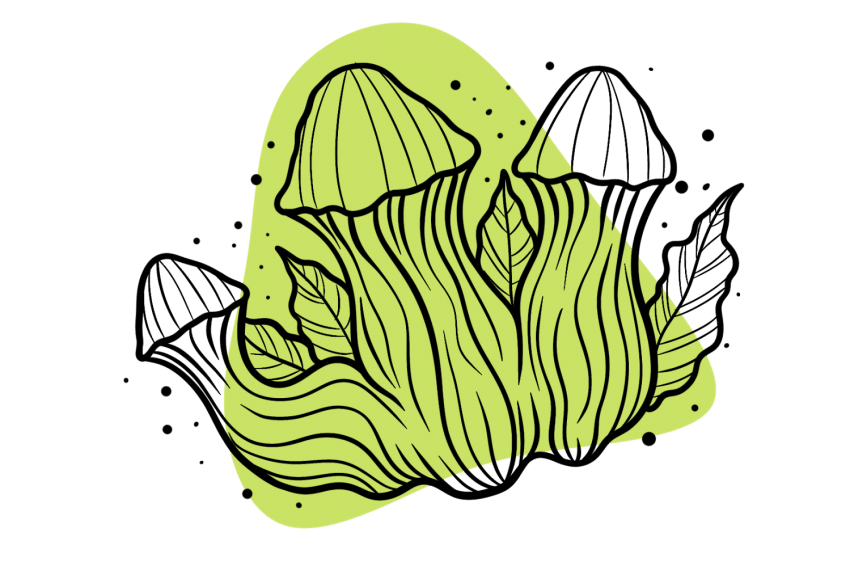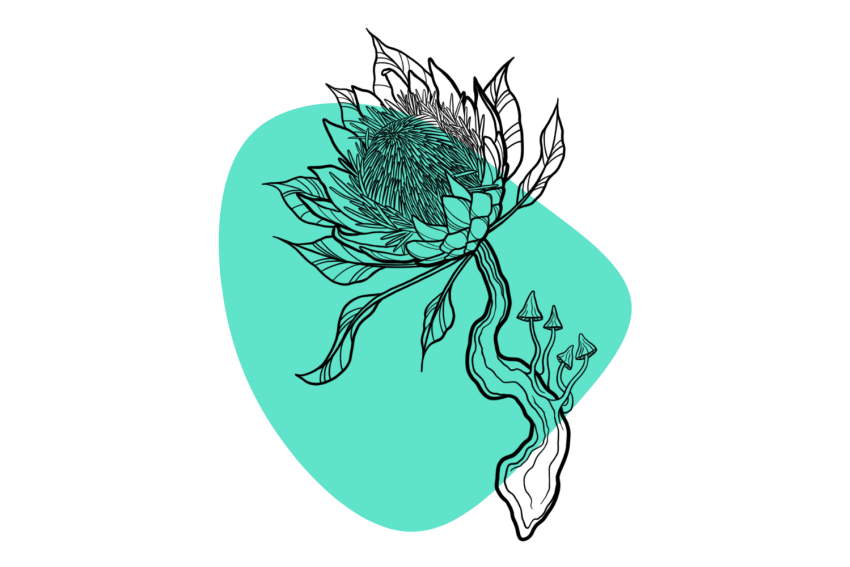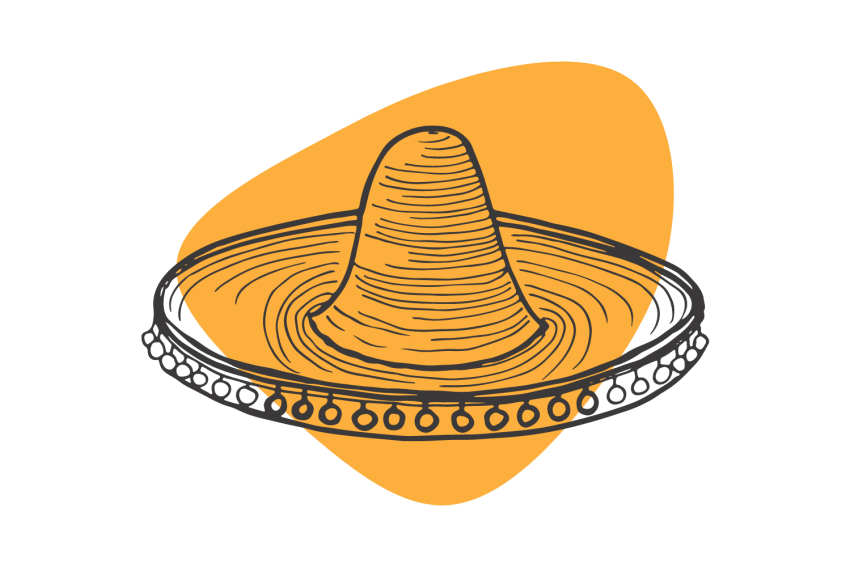The Wollongong Strain: A Classic Australian Shroom
The Wollongong strain has been a popular choice among amateur cultivators in Australia for decades. 🦘 Is it as fun as it sounds?
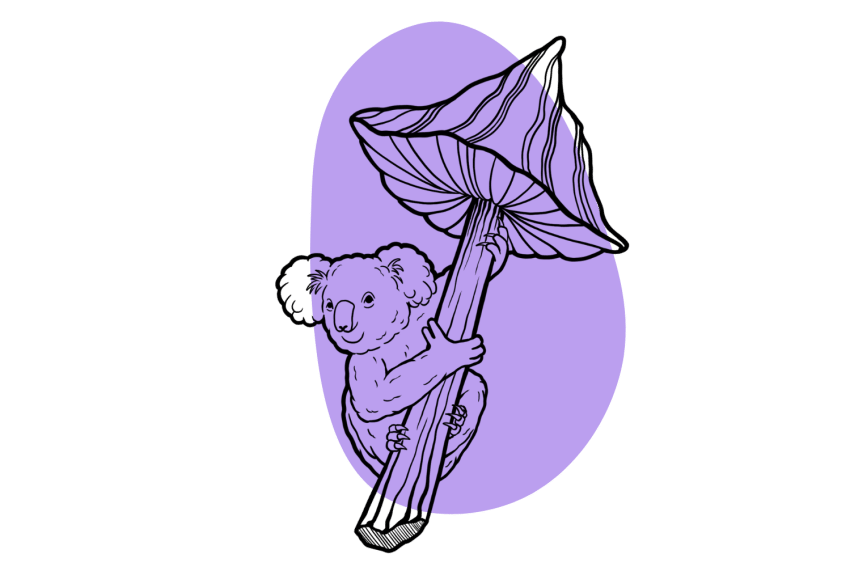
The Wollongong strain is a strain of Psilocybe cubensis native to Australia. It’s named after the city of Wollongong, located on the coast just south of Sydney in Australia. It’s been a popular choice among Australian cultivators for decades but has only reached spore vendors outside the country fairly recently.
This strain is a notoriously aggressive colonizer capable of producing good yields over several healthy flushes. It’s a popular strain among beginners, commercial growers, and people looking to quickly create a large number of shrooms.
The Wollongong strain is pretty average in terms of potency. These mushrooms have light brown caps and white stems and are relatively large. Although the Wollongong strain isn’t much to look at and doesn’t produce super-high tryptamine levels, several other traits make it attractive to many people.
Even the most inexperienced cultivator should be able to produce good results from the Wollongong strain with little time, effort, knowledge, or equipment.
In this article, we’ll look at the history of this Aussie strain, its best traits, potency, some similar strains, and how to get hold of spore samples and cultivate them.
Wollongong Strain Specs
| Potency | Average 🍄 |
| Cultivation | Easy |
| Species | Psilocybe cubensis |
| Substrate Recommendation | Rye Grain, Bird Seed, BRF |
| Sold By | Spores 101 (🇺🇸/🇨🇦), Miracle Farms (🇺🇸/🇨🇦), Sporeslab (🇨🇦), The Magic Mushrooms Shop (🇪🇺) |
History of the Wollongong Strain
The Wollongong strain was initially found growing in South Eastern Australia close to the city of Wollongong, not far from Sydney.
It’s unclear who first discovered, cultivated, and distributed the spores of this strain. However, we know it was found at the bottom of an escarpment — an area of the earth where the elevation changes suddenly — growing in the shade.
This strain has circulated the Australian market for decades and has been a popular choice among amateur cultivators across the country. It was never known or discussed in the United States, Canada, or Europe until recently.
News of the Wollongong strain’s contamination-resistant and aggressive colonization qualities spread outside Australia to the mushroom community. As a result, the spores managed to make their way across the borders and into the North American market through Ralphsters Spores.
The Wollongong strain is slowly gaining popularity because of its desirable qualities. Easy growth and good yields are getting this strain’s name out there. However, genetics for the strain isn’t widespread, with only one or two reliable vendors stocking Wollongong strain spore samples.
Potency & Psilocybin Content
We’ve rated the Wollongong strain as average potency — which suggests an estimated total tryptamine content of 0.5%–0.9%. However, this mushroom strain has not been formally tested enough times to provide a clear expectation of its potency. We reserve the right to alter this estimate when more data becomes available.
From the few samples we’ve tested so far, though, these shrooms have been consistently average compared to other Psilocybe cubensis mushrooms.
The effects of the Wollongong strain are clean but strong. Intense visuals can occur at doses above 3.5 grams, with distortions of light, pulsating waves of energy, and blurred outlines.
The closed-eye visuals produced by the Wollongong strain can be vivid and incredibly insightful. However, a reasonably potent dose is required to experience this. With doses below two grams, you can expect light visual stimulation (closed and open-eye) and a decently intense body high.
Wollongong mushrooms are very similar in terms of potency to Golden Teacher mushrooms.
Related: Magic Mushroom Strain Guide
Where to Buy Wollongong Spores
Spores from the Wollongong strain are easily accessible in Australia through spore trading circles. However, the strain is a little harder to come by in the United States, Canada, and Europe.
Wollongong spores aren’t hugely widespread, but a couple of vendors stock samples. Currently, spores samples from the Wollongong strain are only available in Canada and the United States.
Here are some of our favorite vendors that offer Wollongong or similar genetics:
- If you live in the United States — Spores 101, Miracle Farms
- If you live in Canada — Spores 101, Sporeslab, Planet Spores
- If you live in Europe — The Magic Mushrooms Shop (🇪🇺), Shiny Spores (🇬🇧)
→ View all spore vendors & grow kit suppliers
How to Grow Wollongong Mushrooms
The Wollongong strain is an aggressive colonizer, is contamination-resistant, and can grow in an unoptimized environment. These traits make the strain easy to cultivate, even for the beginner with limited experience.
The simplest and most fool-proof way to get good results from cultivating the Wollongong strain is to use PF-Tek.
PF-Tek is a simple cultivation technique that uses substrate-filled sterile jars, a simple incubator, and a fruiting chamber.
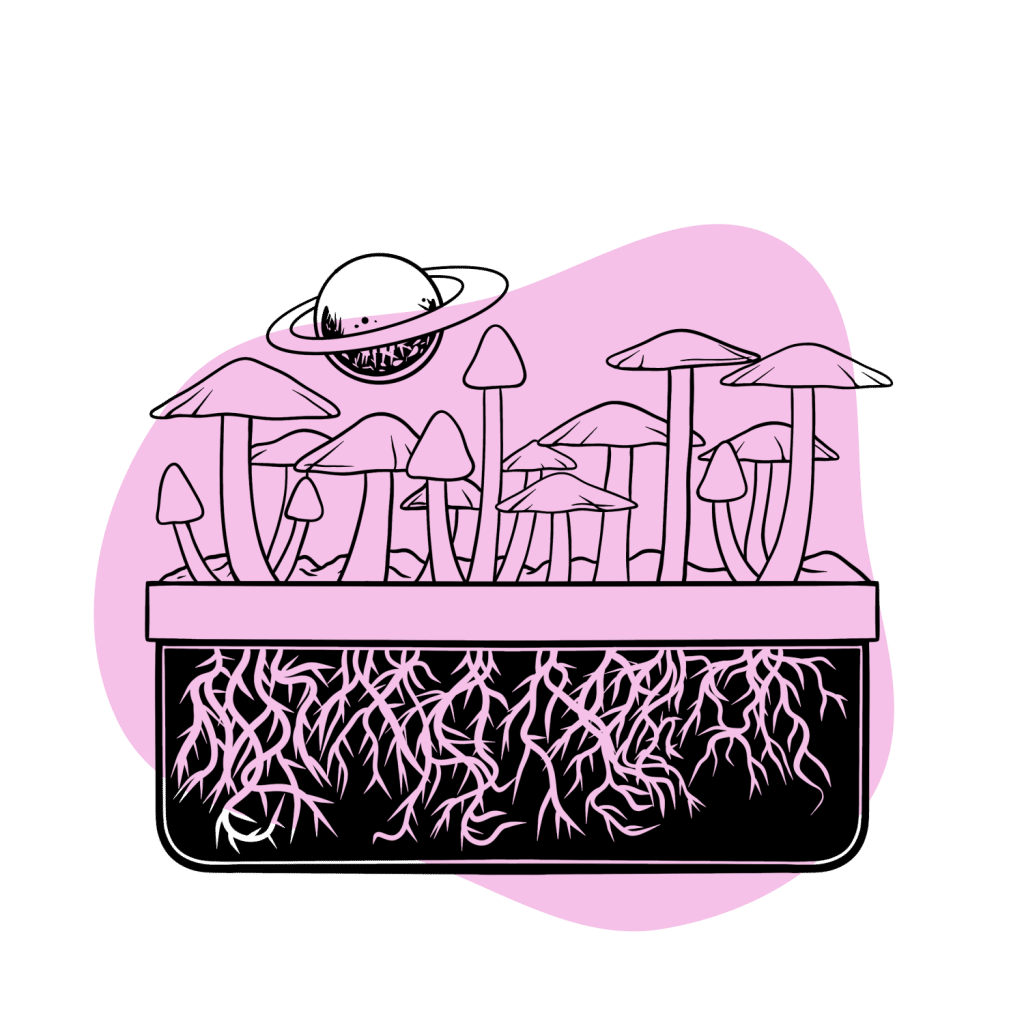
First, fill glass jars with a growing medium. The Wollongong strain grows well on most substrates, but reports show great results on BRF (brown rice flour) cakes and grains such as rye.
Once the jars have the substrate, sterilize them in a pressure cooker for around 30 minutes. After this, they’re cooled and inoculated using a spore syringe. The inoculated jars are then incubated for two to three weeks until the mycelium fully colonizes the substrate.
Once the mycelium is fully established, remove the resulting cakes from the jars and place them in a simple fruiting chamber. Mushrooms will then begin sprouting from the cakes. Harvest the mushrooms as they mature, but before they drop their spores.
If you want to find out how to grow magic mushrooms properly using PF-Tek, check out our step-by-step guide to mushroom cultivation.
Other Australian P. cubensis Strains
The Wollongong strain was discovered in South Eastern Australia in the Illawarra region close to the city of Wollongong (hence the name). It’s one of a few strains of Psilocybe cubensis discovered in the country.
Here are some of the other Aussie strains that are similar to the Wollongong strain:
1. Australian (AUS)
The Australian strain, otherwise known as “Aussie” or “Gold Tops,” is a potent strain of Psilocybe cubensis that grows wild across the pasture lands of Australia. It gets the name Gold Tops from its looks. These shrooms have rounded golden tops similar to the Wollongong strain but are generally much more significant.
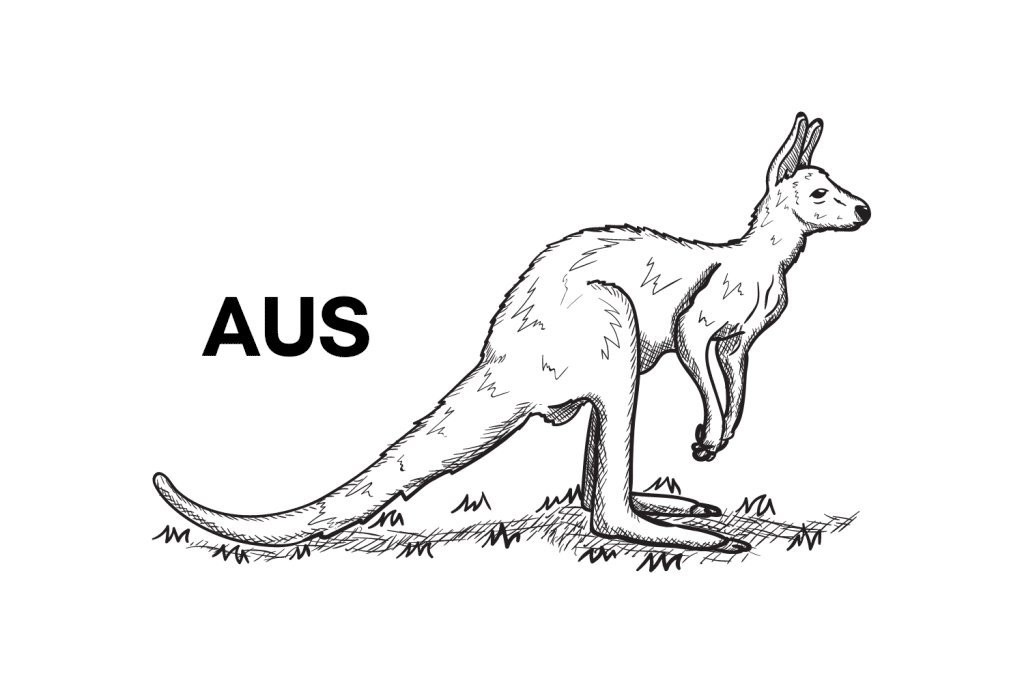
Like the Wollongong strain, the Australian strain is resistant to mold and bacteria contamination, colonizes rapidly, and has the potential to produce good yields over several healthy flushes. This is a great beginner strain for someone looking for a set of genetics that will produce big, potent shrooms.
2. Blue Meanies (BM)
Blue Meanies — not to be confused with the species Panaeolus cyanescens that shares the same nickname — is actually a P. cubensis strain from Australia. There’s a bit of confusion with this strain because of the shared nickname.
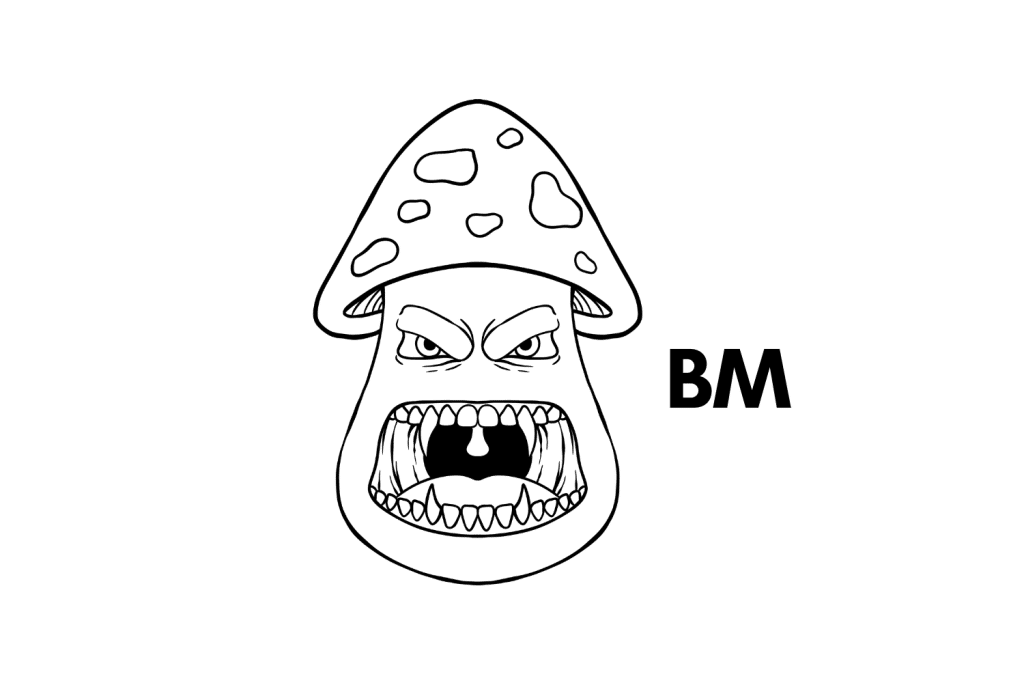
This strain gets its name from the distinct blue coloration that appears on the cap and stems of the mushrooms when they’re touched, picked, or grazed. This blue coloration is a tell-tale sign of psilocybin and is present in any strain or species of psilocybin mushroom. However, it’s more prevalent and noticeable in Blue Meanies than in others.
These shrooms are light in color with golden caps and creamy-white stems until bruised. They share several similarities with the Australian strain, but the fruiting bodies are often much smaller.
It colonizes rapidly, is resistant to contamination, and is relatively easy to grow with little equipment. These traits make it a good beginner strain.
3. Tasmanian (TAS)
The Tasmanian strain isn’t strictly Australian but shares several similarities with the other Australian strains. It gets its name from where it was discovered — Tasmania (a large wild island off the southern tip of Australia). Tasmania’s temperate climate is more suited to magic mushroom growth than mainland Australia.
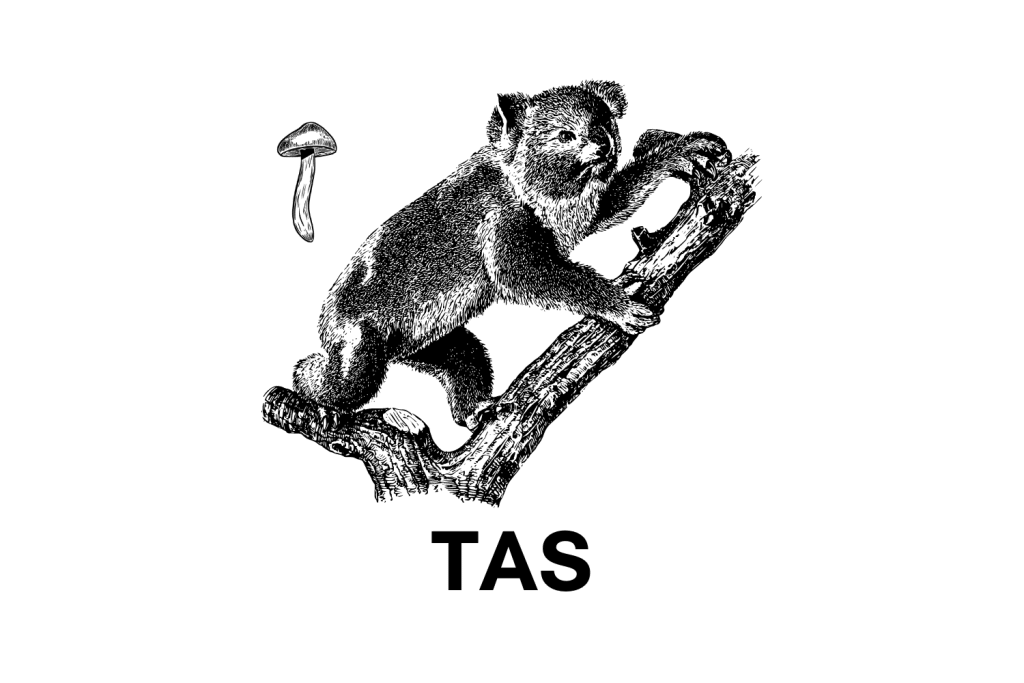
This strain produces mushrooms with notoriously high psilocybin levels. They’re medium to large and have golden brown caps and creamy-colored stems. Thanks to its contamination resistance and aggressive colonization habits, the Tasmanian strain is easy to grow.
It’s also a fantastic strain for those who enjoy collecting spores for future cultivation or microscopy. By simply harvesting the mushrooms with the veil attached, you can rip the veil after and easily gather an abundance of spores. This is one of the best strains to gather a lot of spores from.
Other Beginner Magic Mushroom Strains
The Wollongong strain is easy to cultivate because it’s quite contamination-resistant and has aggressive colonization habits. This makes it an excellent choice for beginner growers looking for their first strain to produce at home. The Wollongong strain can be difficult to get hold of, though. Fortunately, there are other options.
If you’re looking for an easy-to-grow beginner strain, be sure to check out these genetics as well:
1. Golden Teacher (GT)
Golden Teacher is one of the most famous strains of Psilocybe cubensis out there. It’s a popular choice among beginners because it’s resilient to mold and bacteria and can grow well in unoptimized environments.
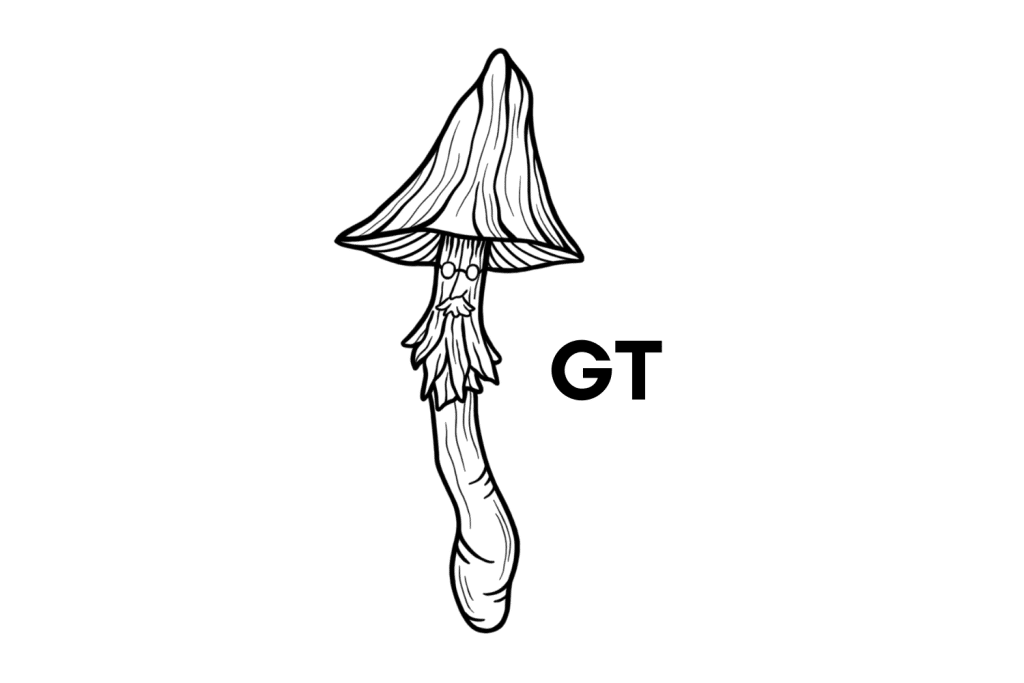
The origins of this strain are unknown, but some think it was first discovered somewhere in the Gulf region of the United States. Regardless of the lack of clarity on its origins, Golden Teacher has circulated the spore market for decades — at least since the early 1980s.
Golden Teacher is a well-rounded strain that produces average-looking shrooms with average to above-average potency (depending on how it’s grown). For most, this is the first shroom they cultivate.
2. Koh Samui (KS)
The Koh Samui strain is a Thai strain that gets its name from the island it came from — Koh Samui. It awas discovered by the legend “Mushroom” John Allen during his travels through Southeast Asia in the 1990s.
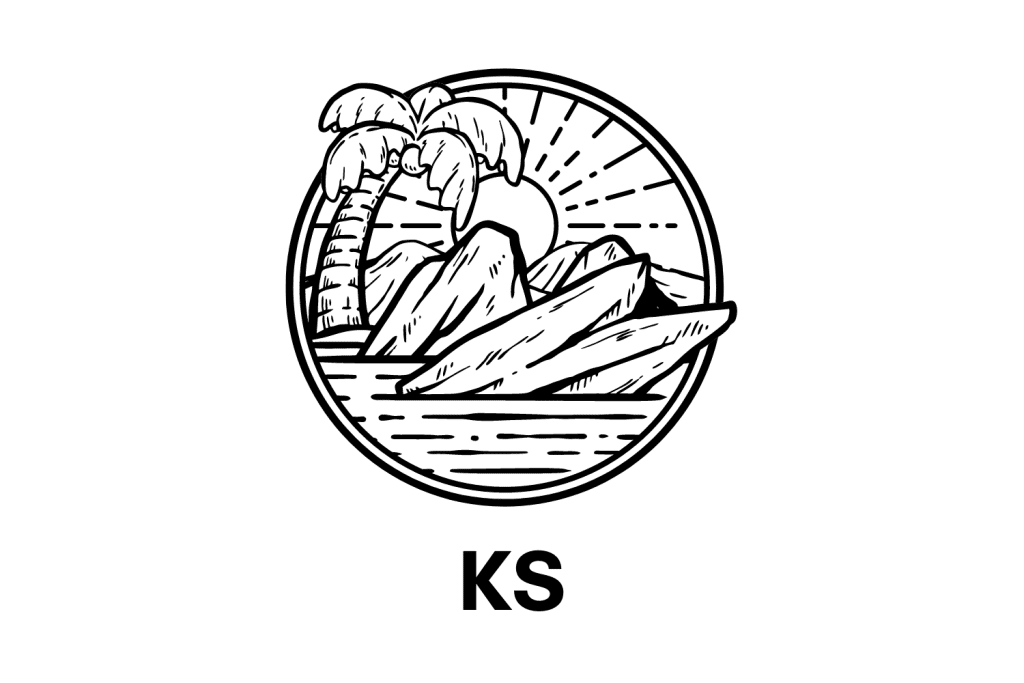
The Koh Samui strain is resistant to contamination and can thrive in an unoptimized environment. The mushrooms produced are known as “fatasses” — short fat shrooms with thick stems. The shrooms have above-average potency.
3. Cambodian (CMB)
The Cambodian strain is another popular Southeast Asian strain. Like many other strains from the region, mycologist John Allen discovered Cambodian during his travels through this part of the world in the 90s.
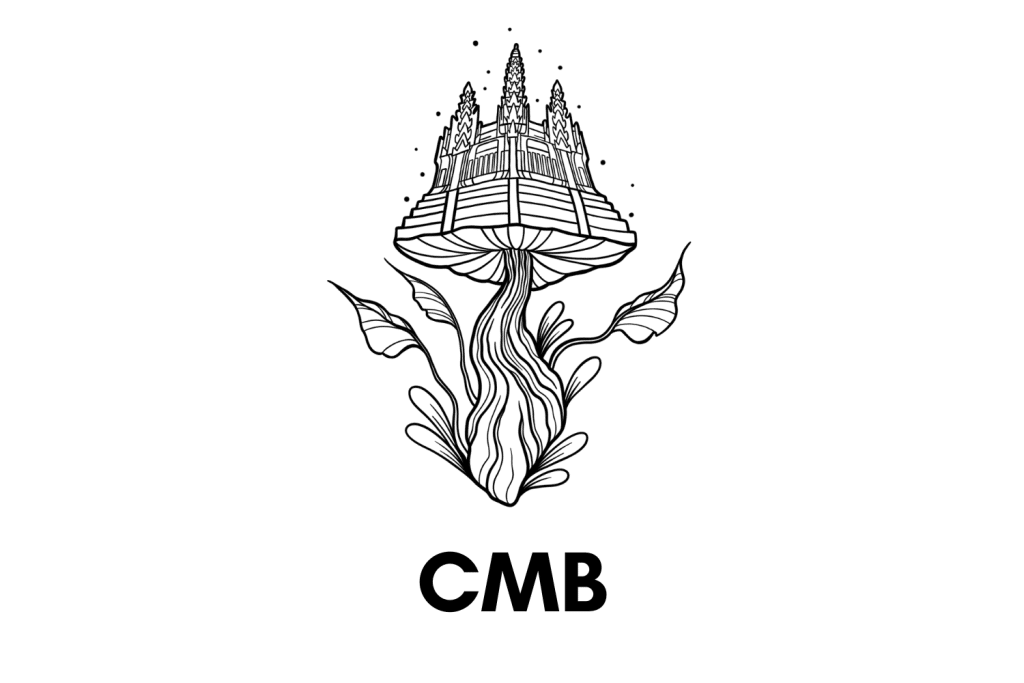
This strain is highly resistant to mold growth and bacteria and can grow well in unoptimized conditions. The mushrooms it produces are kind of boring to look at, but they have above-average potency. The strain can also give notoriously dense flushes with good yields if grown in a stable environment.
The Cambodian strain is gaining popularity for its potency and ease of cultivation. Spore samples can be found pretty much everywhere and can be cultivated by the complete beginner without much in the way of equipment or knowledge of mushroom cultivation.
Strains vs. Species: What’s the Difference?
The Wollongong strain is a strain of the species Psilocybe cubensis.
P. cubensis is just one of the hundreds of different species of psychedelic fungi. It’s one of the most popular and common species of psychedelic mushrooms and is present globally, growing in various environments.
Within the Psilocybe cubensis species exist hundreds of strains with different qualities. Although two strains can be incredibly diverse in appearance and potency, they belong to the same species.
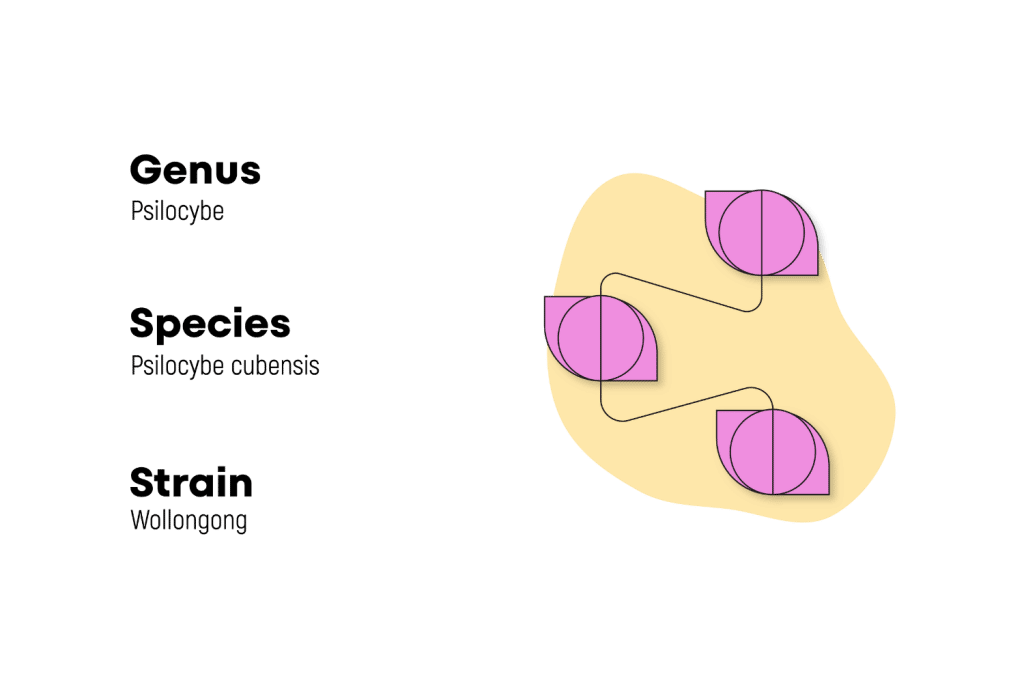
A strain is essentially a genetic variant within a species. Although two strains within a species can vary significantly from one another, they have the same fundamental building blocks that put them in the same biological family. Two strains from the same species can also successfully exchange genetics to create fertile offspring.
Strains aren’t just apparent in the Psilocybe cubensis species of fungi.
Strains exist within thousands of species in several of our planet’s kingdoms. Many strains occur naturally through adaptations to environmental conditions, pests, and diseases. People create other strains through cross-cultivation and selective breeding to develop new traits that are beneficial or enjoyable for us.
We’ve created super-potent strains of Psilocybe cubensis, such as Penis Envy. We’ve made several strains of cannabis with different flavors, potency, and yield potentials. We’ve also mixed dog breeds to create new breeds (strains) that are better for specific jobs, environmental conditions, or are more suitable as “pets.”
Here are some examples of strains that belong to different species of fungi, animals, and plants:
| Species | Strain 1 | Strain 2 | Strain 3 | Strain 4 |
| Psilocybe cubensis | Golden Teacher | Penis Envy | Amazonian | Wollongong |
| Cannabis sativa | Purple Haze | White Widow | AK-47 | Sour Diesel |
| Canis familiaris | Alaskan Malamute | Border Collie | German Shepherd | West Highland Terrier |
| Cyprinus rubrofuscus | Kohaku | Chagoi | Showa Sanshoku | Taisho Sanke |

